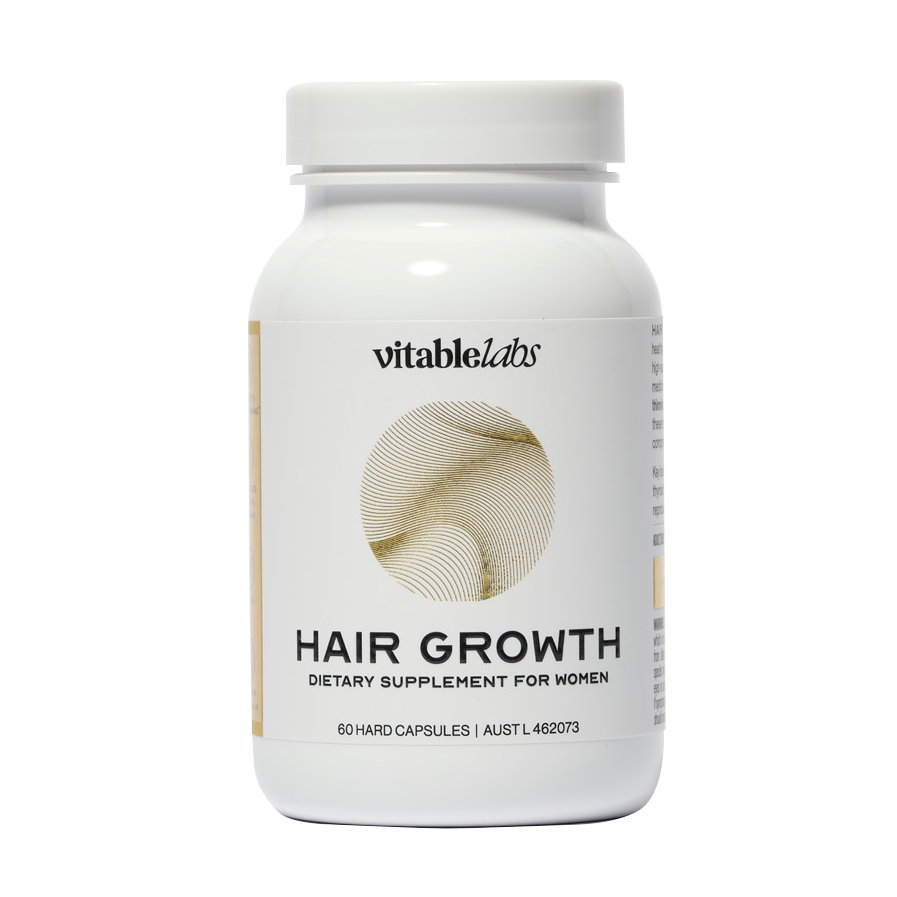Wellness Blog
The content on this blog is for general informational purposes only and is not a substitute for professional medical advice, diagnosis, or treatment. Always consult your healthcare provider before making changes to your health routine or taking new supplements.
Effective ways to manage PMS mood swings
Experiencing different moods is a natural part of daily life, while low mood is not uncommon and can be triggered by various circumstances, the intensity of PMS mood swings are directly impacted by a woman's hormonal cycle.While 75% of women experience mild PMS mood swings, the rest can have severe experiences that can affect their lifestyle (1). This article will give you an understanding on what PMS is, why mood swings occur, and how to manage PMS mood swings.What is PMS?Premenstrual syndrome or premenstrual tension (PMT) is a group of physical and emotional symptoms occurring within a woman's monthly cycle (1). It happens 4 to 10 days before the period starts and ends before the onset of bleeding (2).Most common physical symptoms of PMS are (1): Headache Cramps Bloating Fatigue Muscle and joint pain Sleepiness Emotional symptoms of PMS may include (1): Anxiety Decrease in sexual desire Decrease of self-esteem and confidence Irritability Mood swings Doctors will diagnose if your condition is that of PMS by checking the symptoms and its subsequent patterns, it's consistency during periods, and how it affects your daily life (3).Why PMS mood swings happenThe exact cause of PMS is unknown, but there are a few factors that contribute to it.One of which is chemical changes in the brain. Serotonin, which is a neurotransmitter, fluctuates when PMS happens and can directly affect the mood of a person (4). A study also shows that during PMS, women experience higher emotional levels and have less control over it (5).Changes in estrogen levels during ovulation and menstruation can also affect the mood of women. It also influences serotonin's effect on emotional processing and mood regulation (6). Because hormones affect emotions, it's no wonder that mood swing is one of the common recurring symptoms of PMS (7).5 Tips On How To Manage PMS Mood SwingsPMS can affect a woman both physically and emotionally. The good news is, it can be managed. To take care of yourself during this time, here are some tips to consider:Track Your CycleKeeping an updated log of your cycle - as well as your symptoms and mood shifts - can help you identify if you're experiencing PMS. By knowing that your cycle is round the corner, you can prepare for the other steps to keep your mood relaxed. It will also help you understand why you experience the slight changes in how you feel.Aside from being aware of what's happening to your body, you will be able to assist your doctor with accurately diagnosing the condition, which then helps them arrive at a targeted recommendation. It can also reconfirm whether it is PMS or perhaps another underlying condition that exhibits similar symptoms. Meditate and ExerciseA lot of studies have identified meditation and exercise as beneficial for the mind and body, which also manage mood swings during PMS.Meditation influences the sympathetic nervous system to lower the blood pressure, breathing, and heart rate during stressful situations, all of which help you feel more relaxed (8). It also helps connect you with yourself, promoting mindfulness, and helps you respond in a calmer demeanor.Regular exercise, on the other hand, improves mood by raising serotonin, one of the happy hormones (9) produced by the body. It also increases blood circulation to the brain and affects the different regions of the brain which controls mood and motivation (10). Exercise is generally good for the body, but make sure that it's executed properly and at the right intervals as this might affect other PMS symptoms, which can hinder its benefits.Consult Your Doctor or Clinical NaturopathAsking for your doctor or Naturopath's advice can help identify the next steps for PMS, especially if it becomes disruptive or recurring. In advanced cases, it can be diagnosed as premenstrual dysphoric disorder or PMDD, which is the severe form of PMS (11). It's always best to consult with professionals to know what to do next to handle the symptoms properly.Some prescribe medications, to reduce mood symptoms and the effects of hormones during PMS (4). They can also prescribe alternative medicine and remedies, which can also provide relief to different PMS symptoms (4).Make Dietary ChangesFeeling good can start with what you eat. Serotonin is known to regulate sleep, mood, and emotions (12). This is mostly produced in the gastrointestinal tract which is embedded with neurons that affect emotions (12). Also, the food we eat can affect our mood and how we control it (13). Histamine is known to play a role in premenstrual syndrome (PMS) and premenstrual dysphoric disorder. Premenstrual and perimenopausal symptoms can be relieved mid cycle with the intake of VItamin B6 and a dairy free diet, as these help in natural histamine reduction (16). By eating less salty and high sugar foods, your body will thank you as it reduces bloating (14). Adding more fruits and vegetables to your diet has also been seen to boost happiness (15). There are certain nutrients, such as magnesium, that can manage symptoms of PMS (4). Whether it's sourced from food or supplements, it can support the body's effort to minimise the effects of PMS as well as sustain wellness.Vitamins To Help Diet Manage PMS Mood SwingsImproving your nutrient intake can affect the way PMS mood swings impact you each month. A varied diet and personalised supplementation can support hormonal balance and help to increase the feel-good hormones that help to keep your emotions and mood stable.Vitable offers a supplement subscription service to support your health concerns. Whether it's for hormonal balance to manage PMS mood swings or to add nutrients you need more of, they have it through their custom multivitamin packs.As one of the companies to offer the best vitamin packs in Australia, Vitable offers a wide selection of supplements for your health needs. Choose the vitamins that you want in your vitamin pack and pay only for what you need. It comes with a vitamin delivery service so you get it right at your doorstep.*Always read the label. Follow the directions for use. If symptoms persist, talk to your health professional. Vitamin and/or mineral supplements should not replace a balanced diet.References: “Premenstrual syndrome (PMS)”. Better Health Channel. Published Dec. 5, 2019 on https://www.betterhealth.vic.gov.au/health/conditionsandtreatments/premenstrual-syndrome-pms. Accessed on Jan. 22, 2022 “Premenstrual syndrome (PMS)“. Family Planning NSW. Published on https://www.fpnsw.org.au/factsheets/individuals/periods/premenstrual-syndrome. Accessed on Jan. 22, 2022 “Premenstrual syndrome (PMS)”. The American College of Obstetricians and Gynecologists. Published May 2021 on https://www.acog.org/womens-health/faqs/premenstrual-syndrome. Accessed on Jan. 22, 2022 “Premenstrual syndrome (PMS)”. Mayo Clinic. Published Feb. 7, 2020 on https://www.mayoclinic.org/diseases-conditions/premenstrual-syndrome/symptoms-causes/syc-20376780. Accessed on Jan. 22, 2022 Saglam, H., and Basar, F. "The relationship between premenstrual syndrome and anger". Pakistan journal of medical sciences. Published Apr. 2019 on https://doi.org/10.12669/pjms.35.2.232. Accessed on Jan. 22, 2022 Wharton, W., Gleason, C., Olson, S., Carlsson, C., et al. "Neurobiological Underpinnings of the Estrogen - Mood Relationship". Current psychiatry reviews. Published Aug. 26, 2013 on https://doi.org/10.2174/157340012800792957. Accessed on Jan. 22, 2022 Freeman, E., Halberstadt, S., Rickels, K., Legler, J., et al. "Core symptoms that discriminate premenstrual syndrome". Journal of women's health. Published Jan. 2011 on https://doi.org/10.1089/jwh.2010.2161. Accessed on Jan. 22, 2022 “What meditation can do for your mind, mood and health”. Harvard Health Publishing. Published Jul. 16, 2014 on https://www.health.harvard.edu/staying-healthy/what-meditation-can-do-for-your-mind-mood-and-health-. Accessed on Jan. 22, 2022 “Premenstrual syndrome (PMS)“. HealthDirect. Published Nov. 2020 on https://www.healthdirect.gov.au/premenstrual-syndrome-pms. Accessed on Jan. 22, 2022 Sharma, A., Madaan, V., and Petty, F. "Exercise for mental health". Primary care companion to the Journal of clinical psychiatry. Published 2006 on https://doi.org/10.4088/pcc.v08n0208a. Accessed on Jan. 22, 2022 “Premenstrual Dysphoric Disorder (PMDD)”. Cleveland Clinic. Published Nov. 23, 2020 on https://my.clevelandclinic.org/health/articles/9132-premenstrual-dysphoric-disorder-pmdd. Accessed on Jan. 22, 2022 Selhub, E. “Nutritional psychiatry: Your brain on food”. Harvard Health Publishing. Published Mar. 26, 2020 on https://www.health.harvard.edu/blog/nutritional-psychiatry-your-brain-on-food-201511168626. Accessed on Jan. 22, 2022 Aucoin, M., and Bhardwaj, S. Generalized Anxiety Disorder and Hypoglycemia Symptoms Improved with Diet Modification. Case reports in psychiatry. Published Jul. 14, 2016 on https://doi.org/10.1155/2016/7165425. Accessed on Jan. 22, 2022 “Premenstrual syndrome (PMS)”. Mayo Clinic. Published Feb. 7, 2020 on https://www.mayoclinic.org/diseases-conditions/premenstrual-syndrome/symptoms-causes/syc-20376780. Accessed on Jan. 22, 2022 Mujcic, R., and J Oswald, A. "Evolution of Well-Being and Happiness After Increases in Consumption of Fruit and Vegetables". American journal of public health. Published May 3, 2015 on https://doi.org/10.2105/AJPH.2016.303260. Accessed on Jan. 22, 2022 https://www.ncbi.nlm.nih.gov/pmc/articles/PMC4890701/ Jun 2016
Learn more




